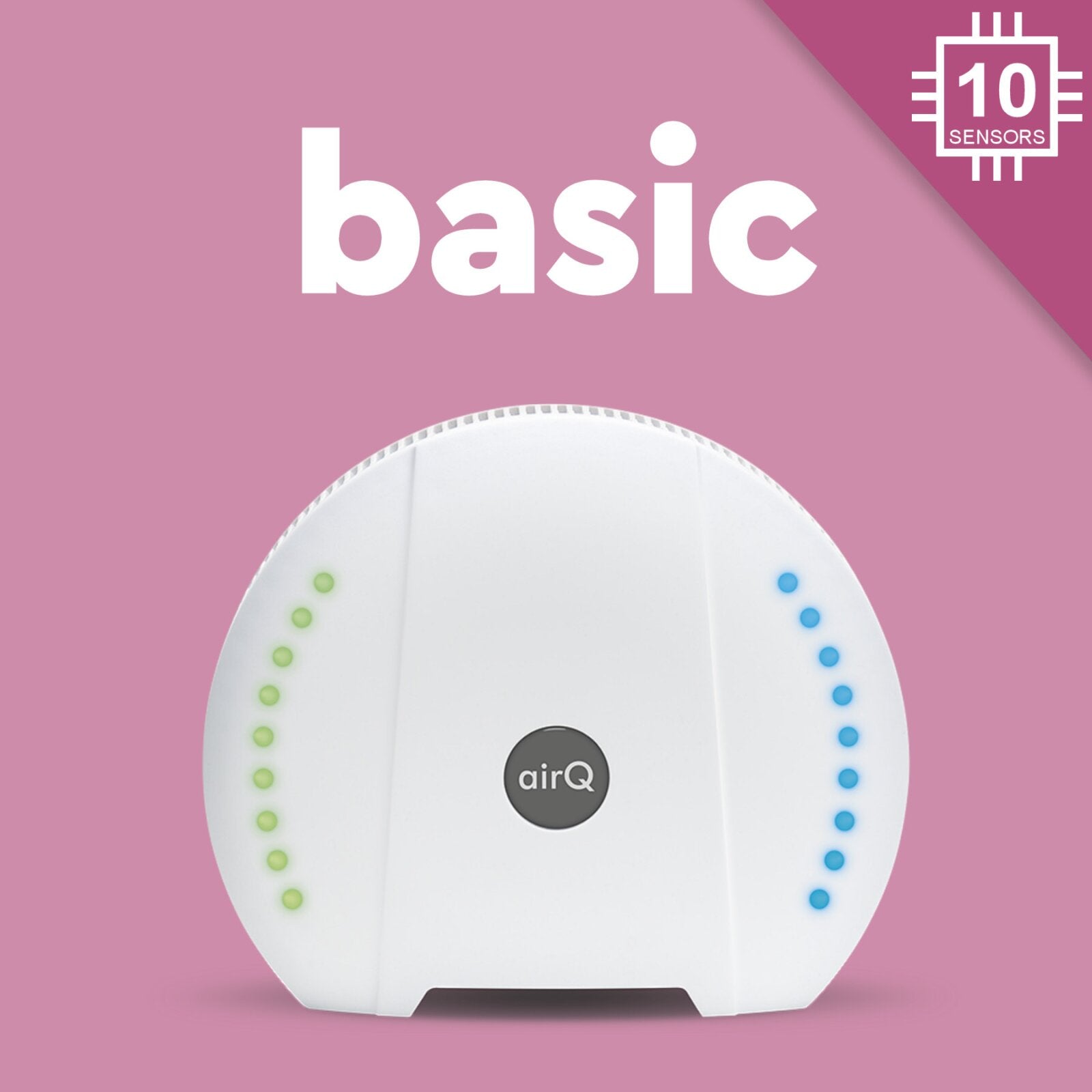
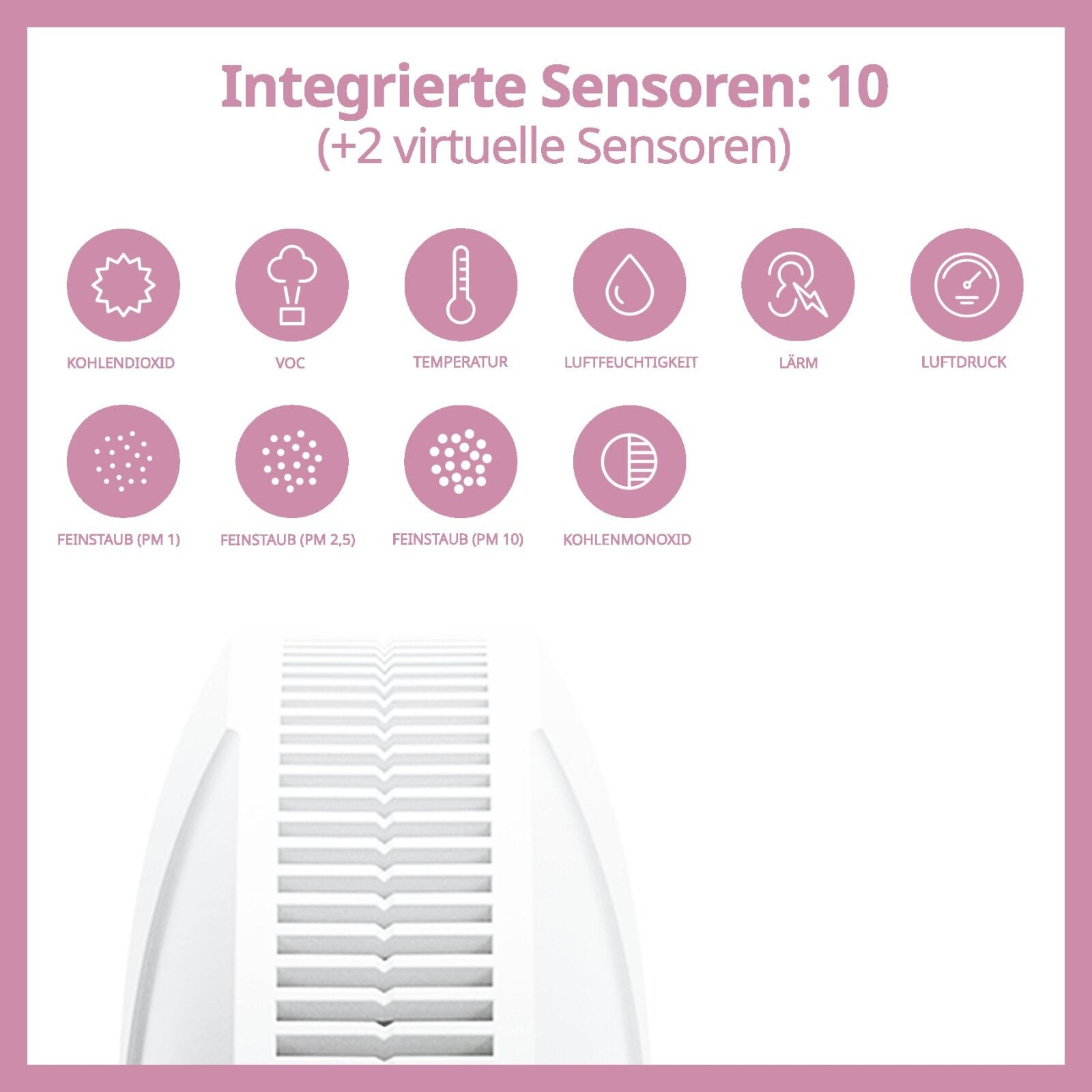
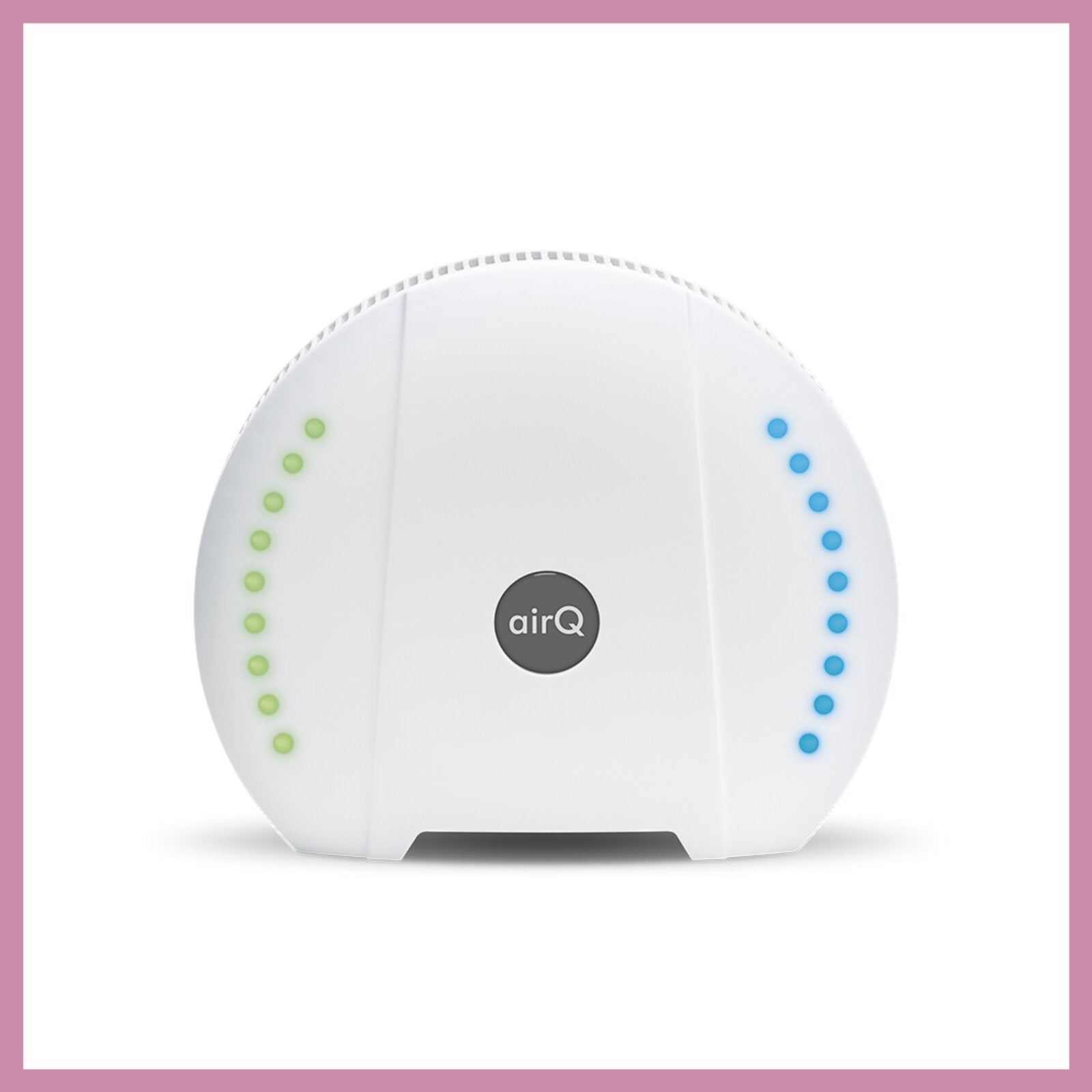
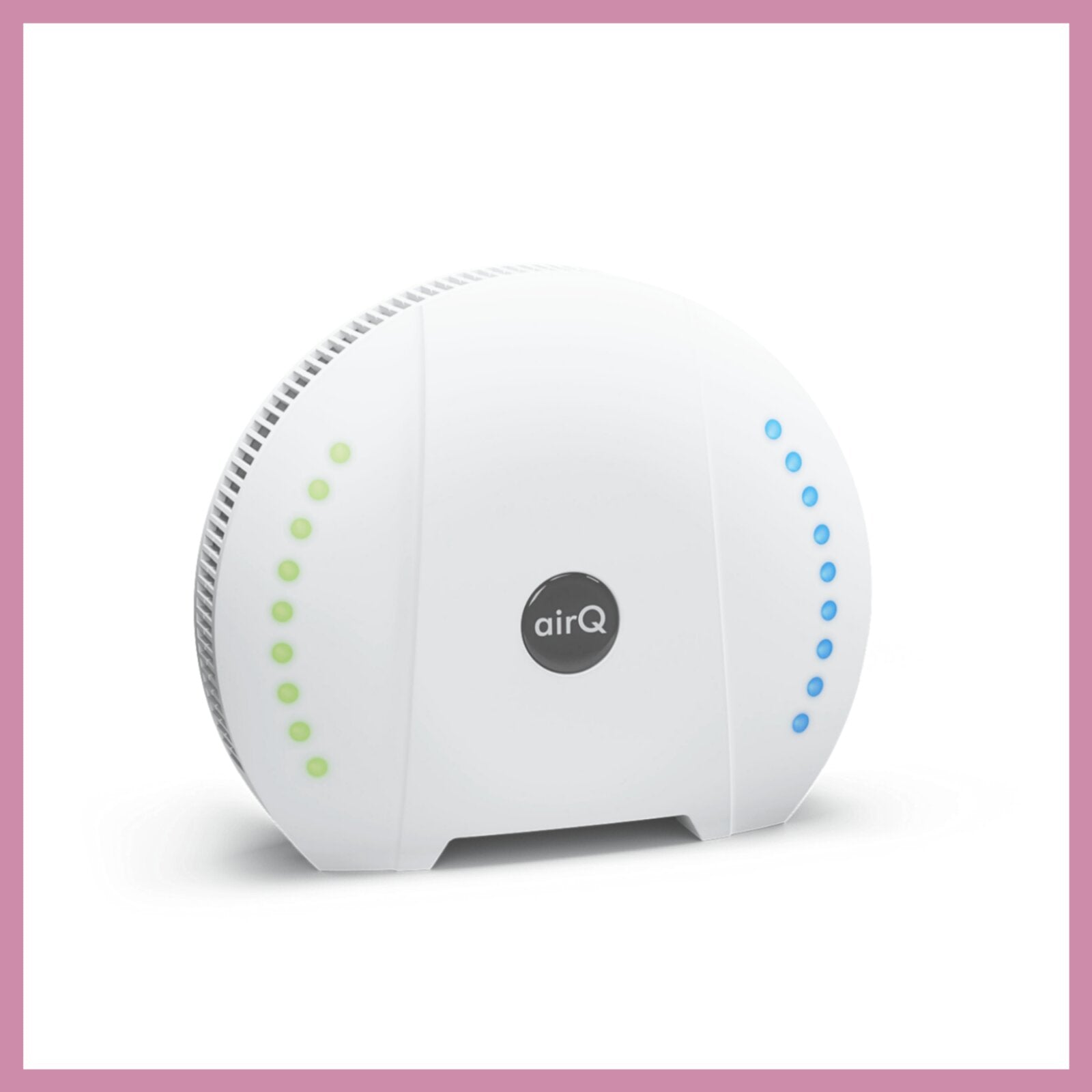
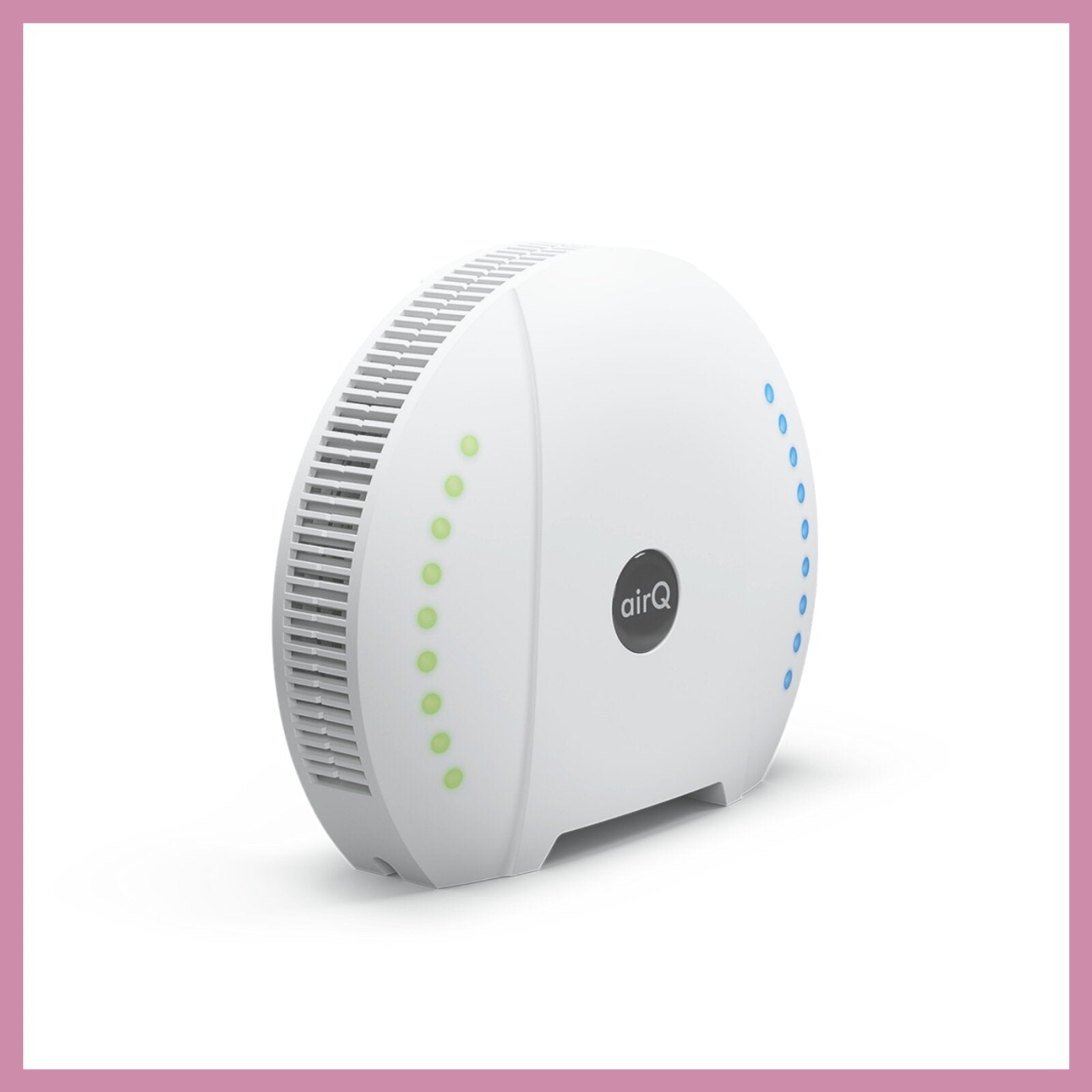
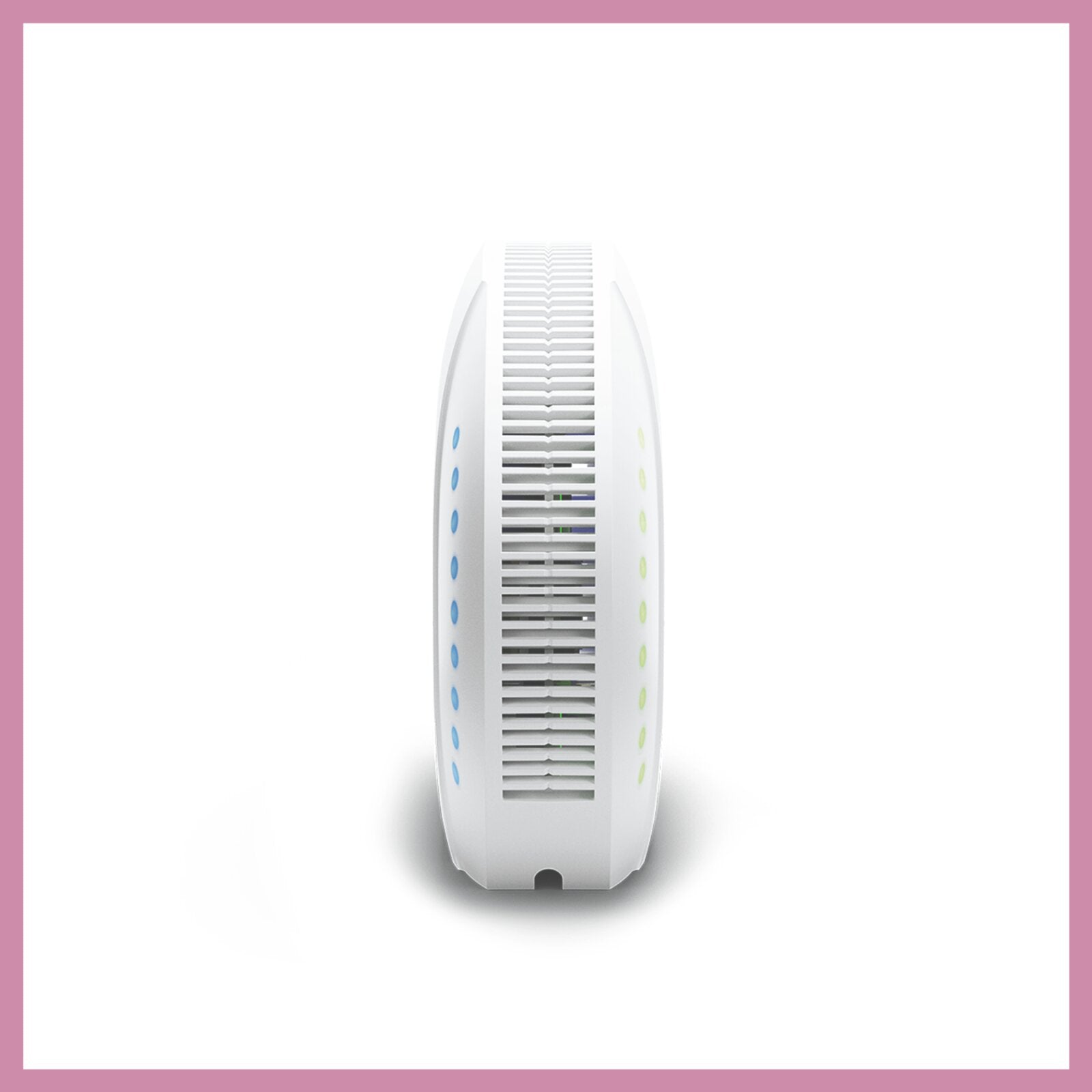
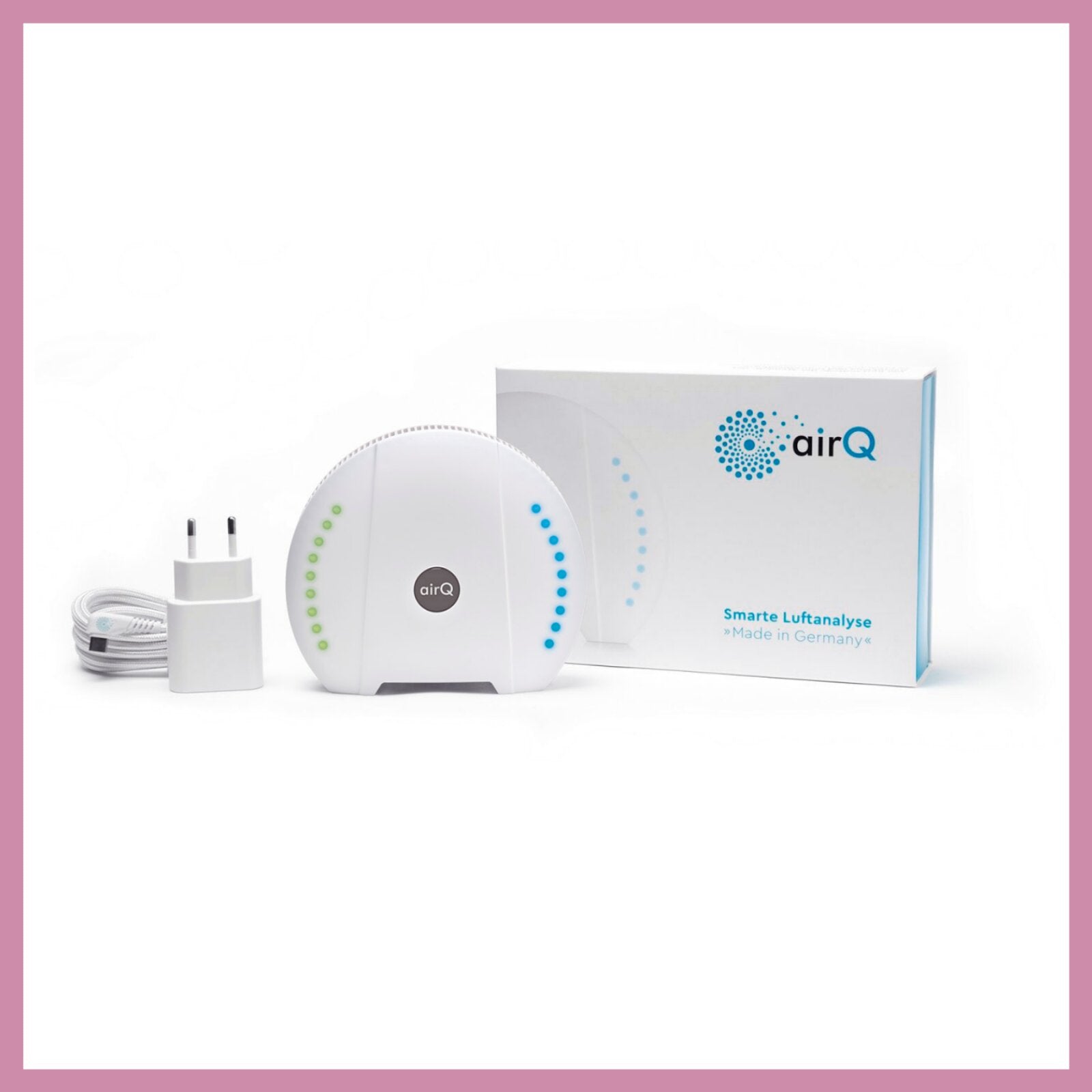
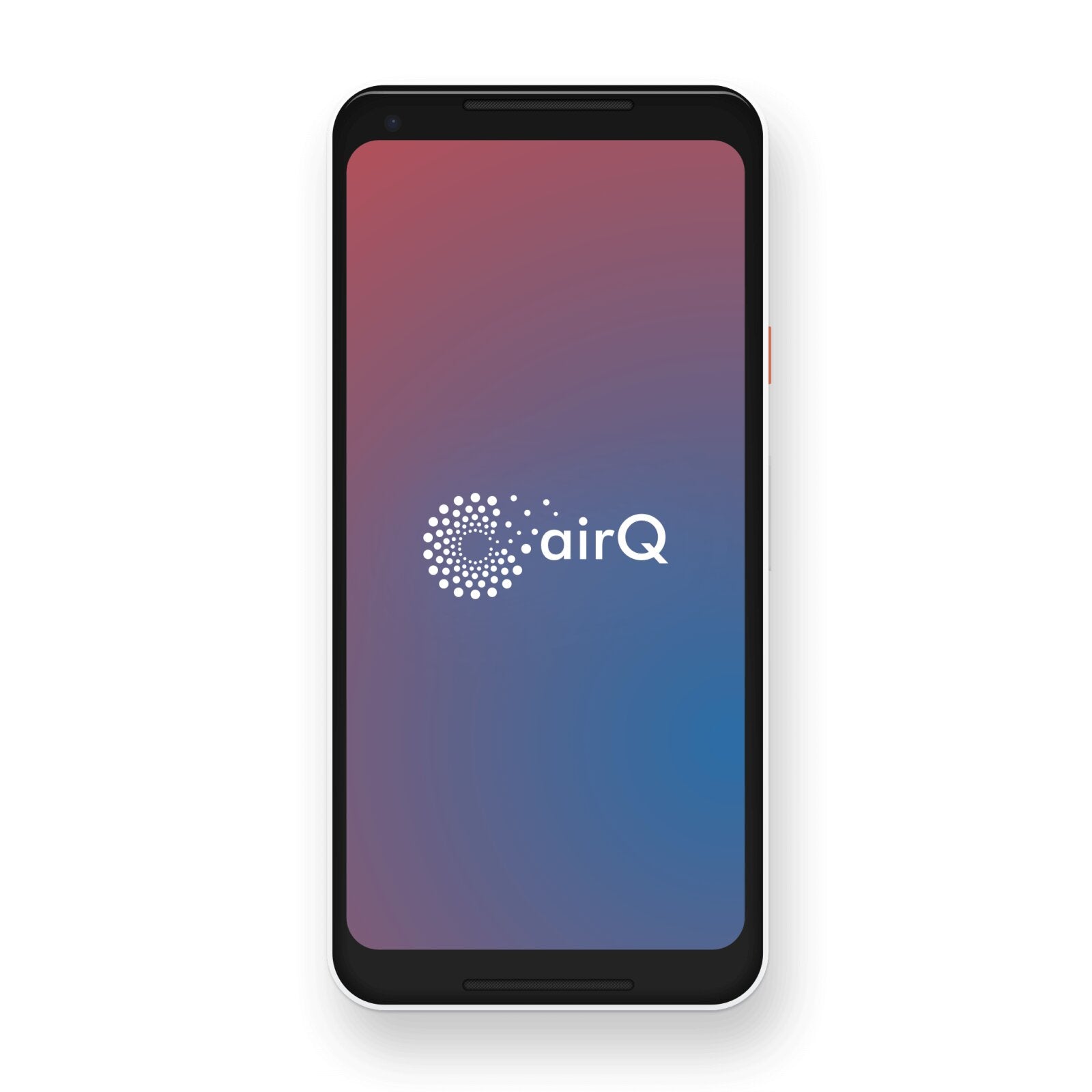
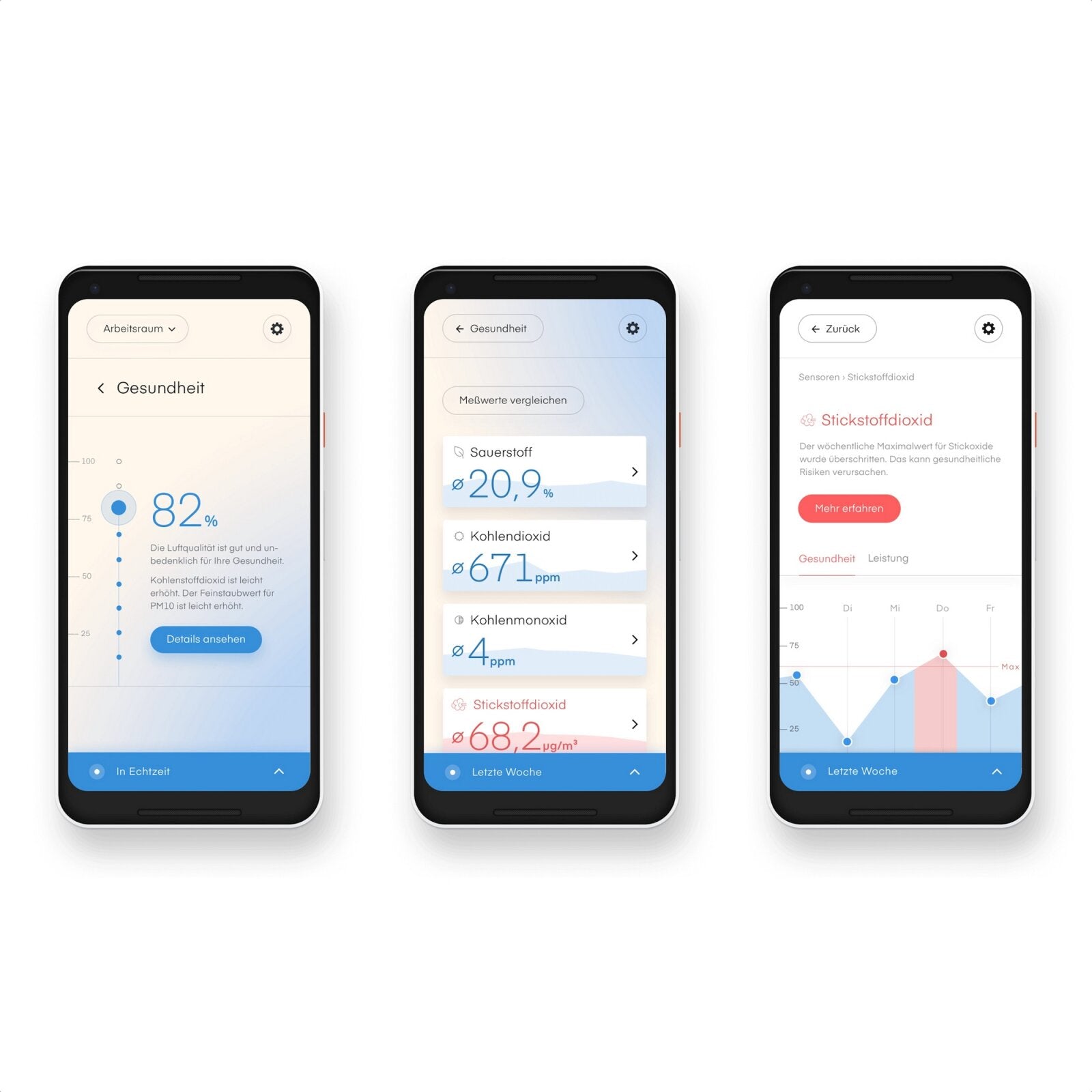
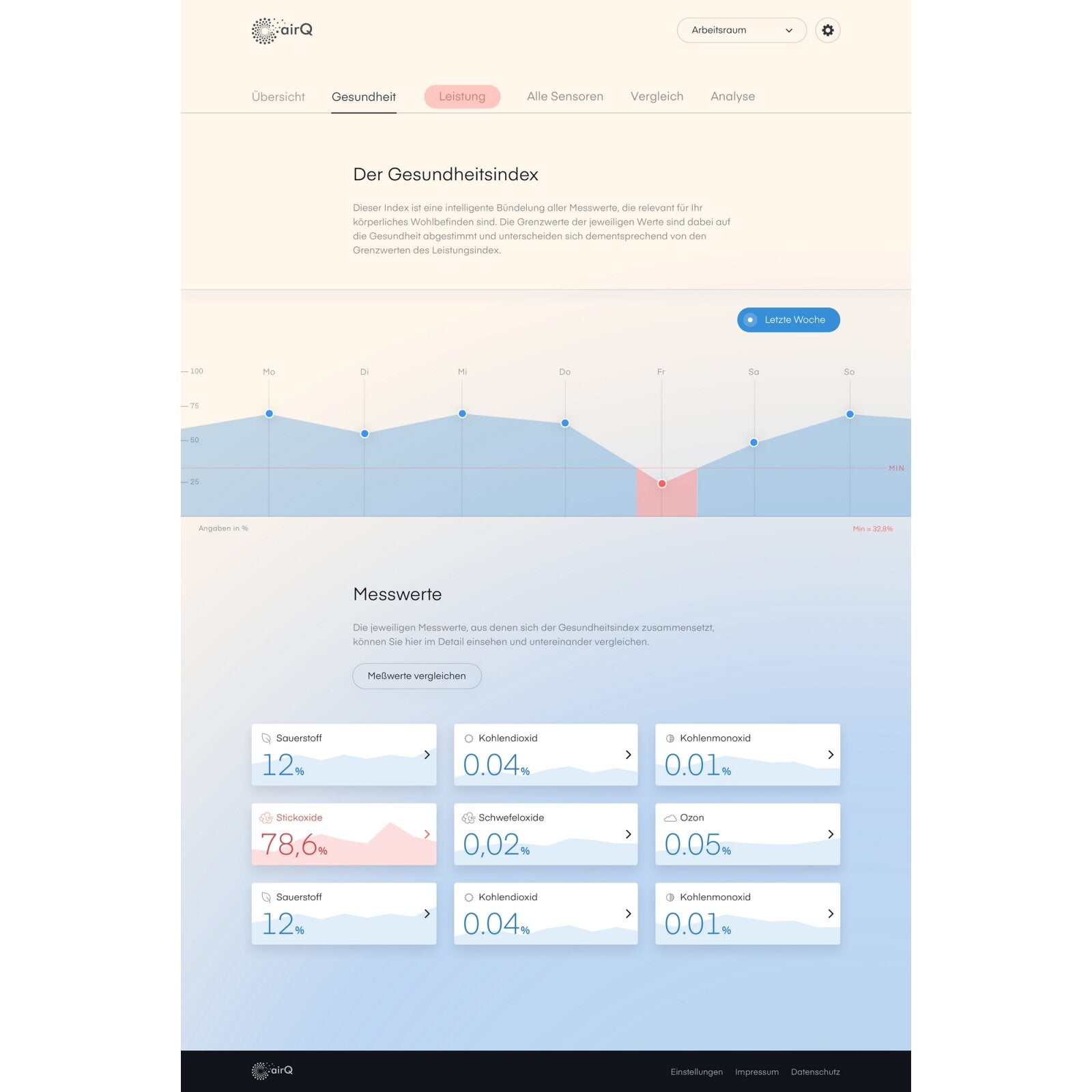
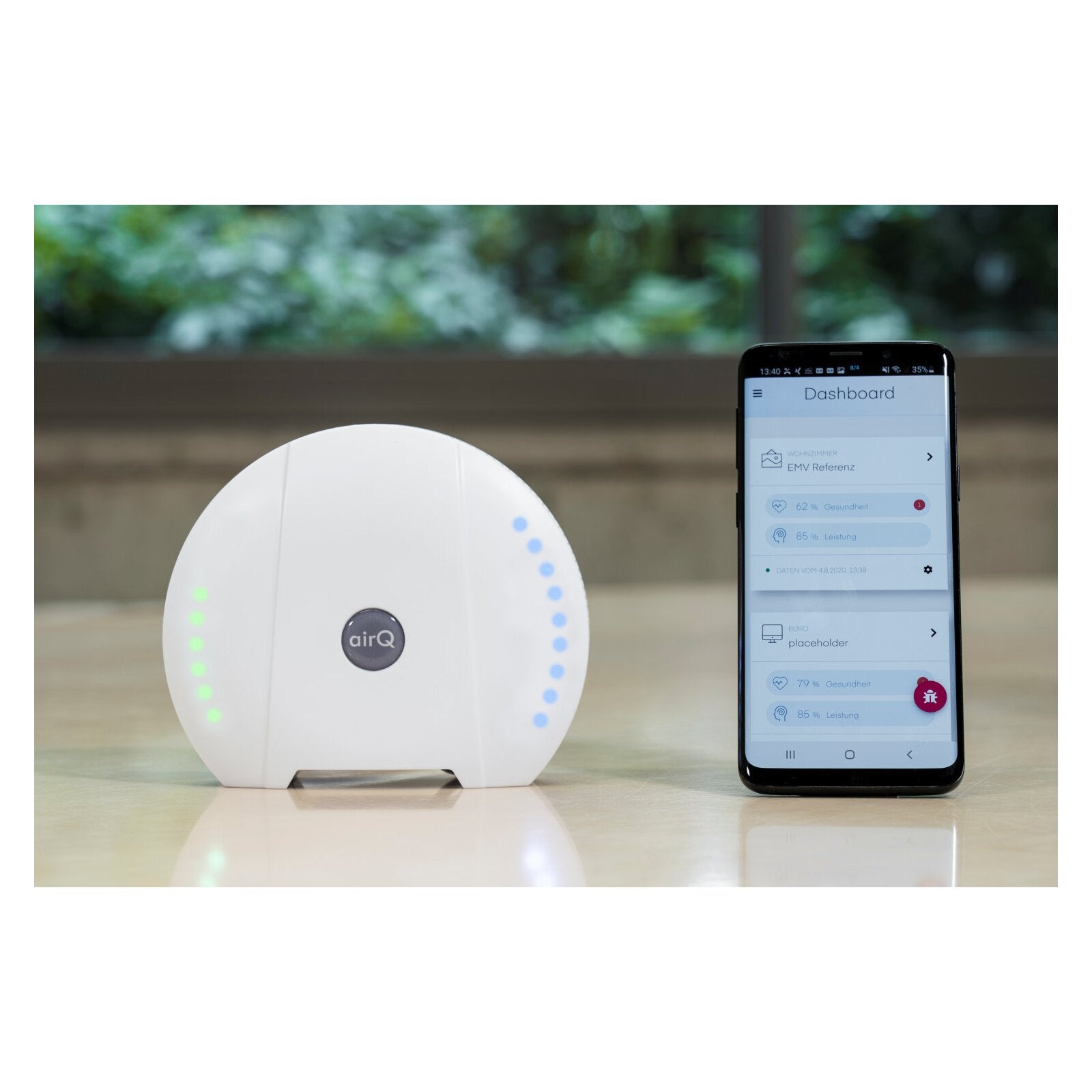
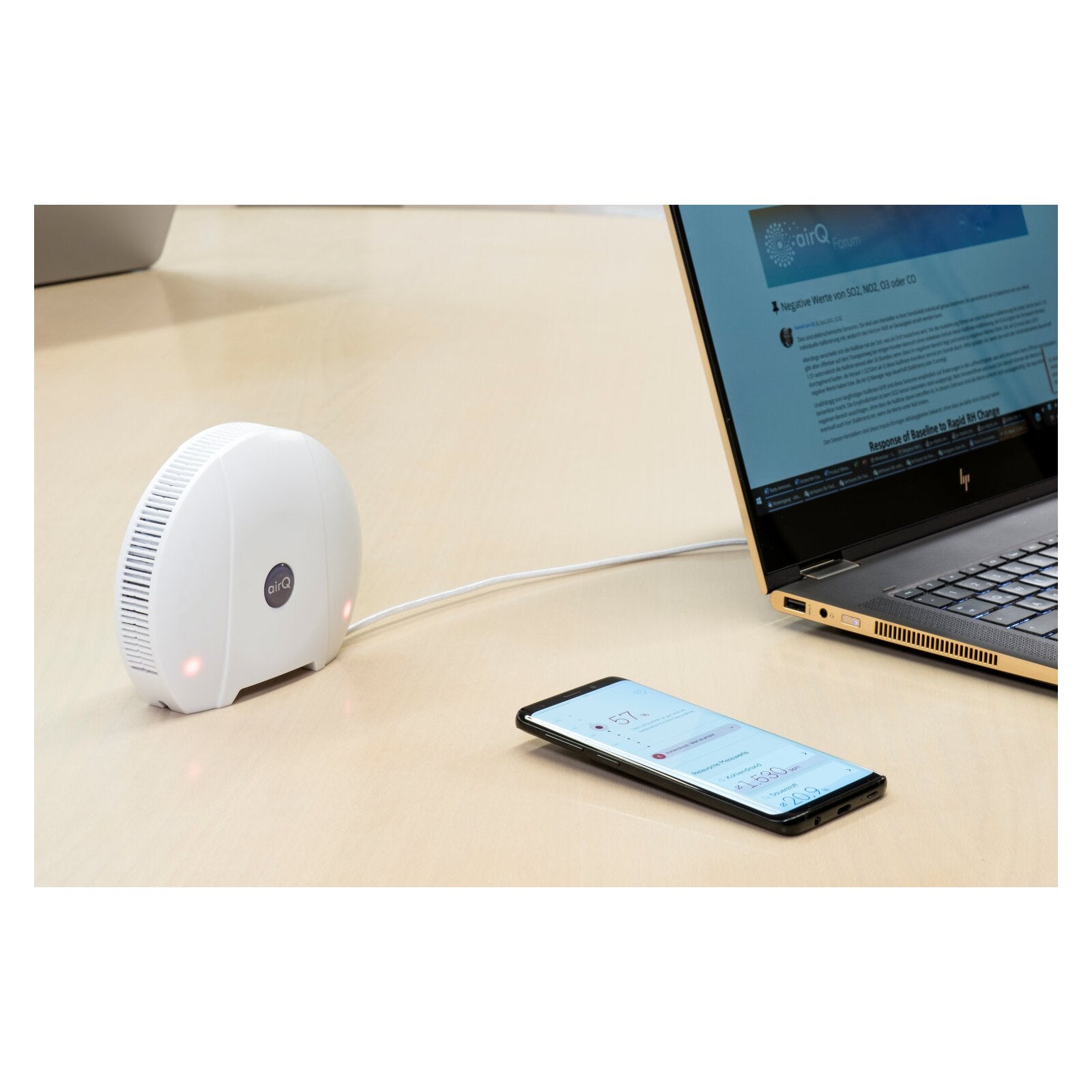
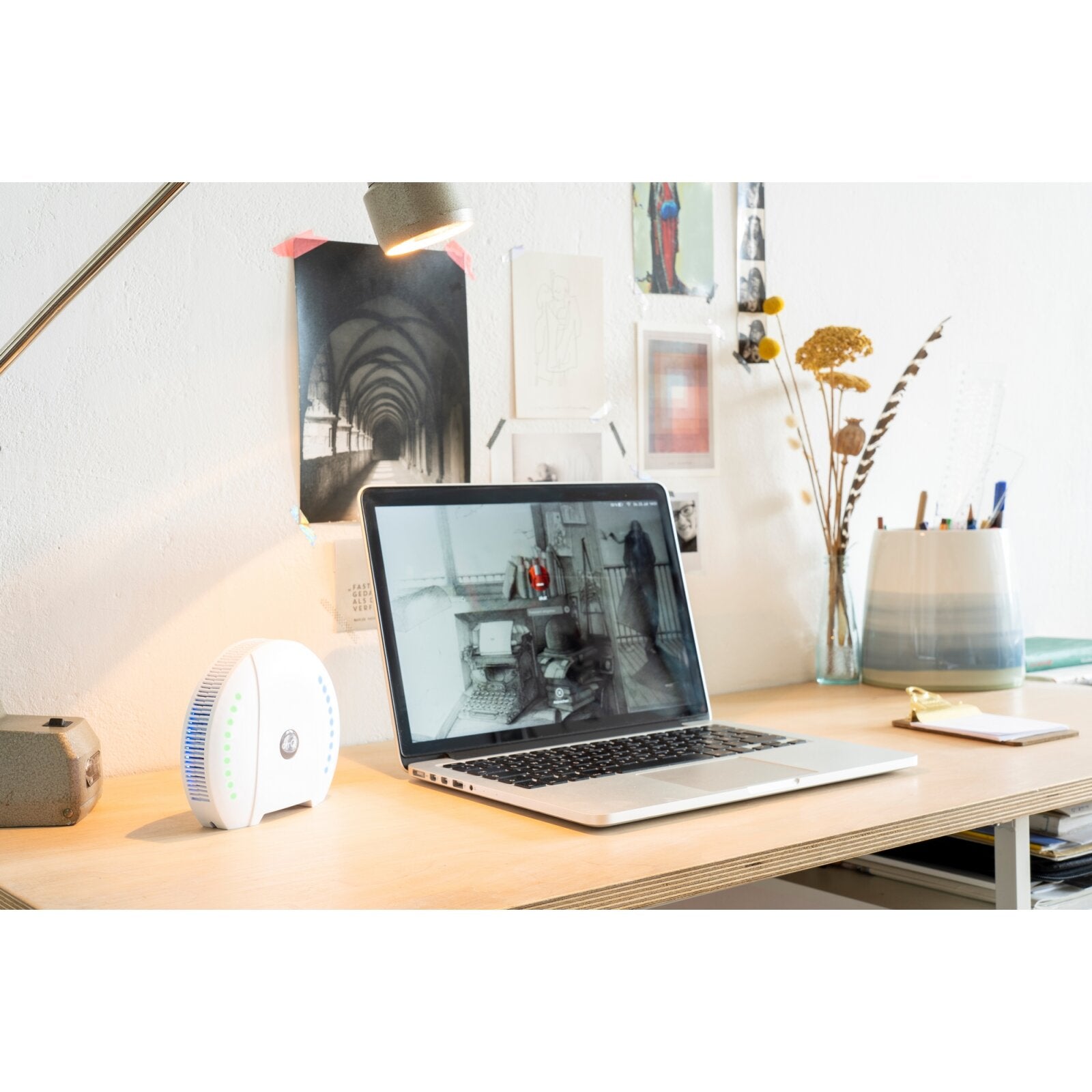
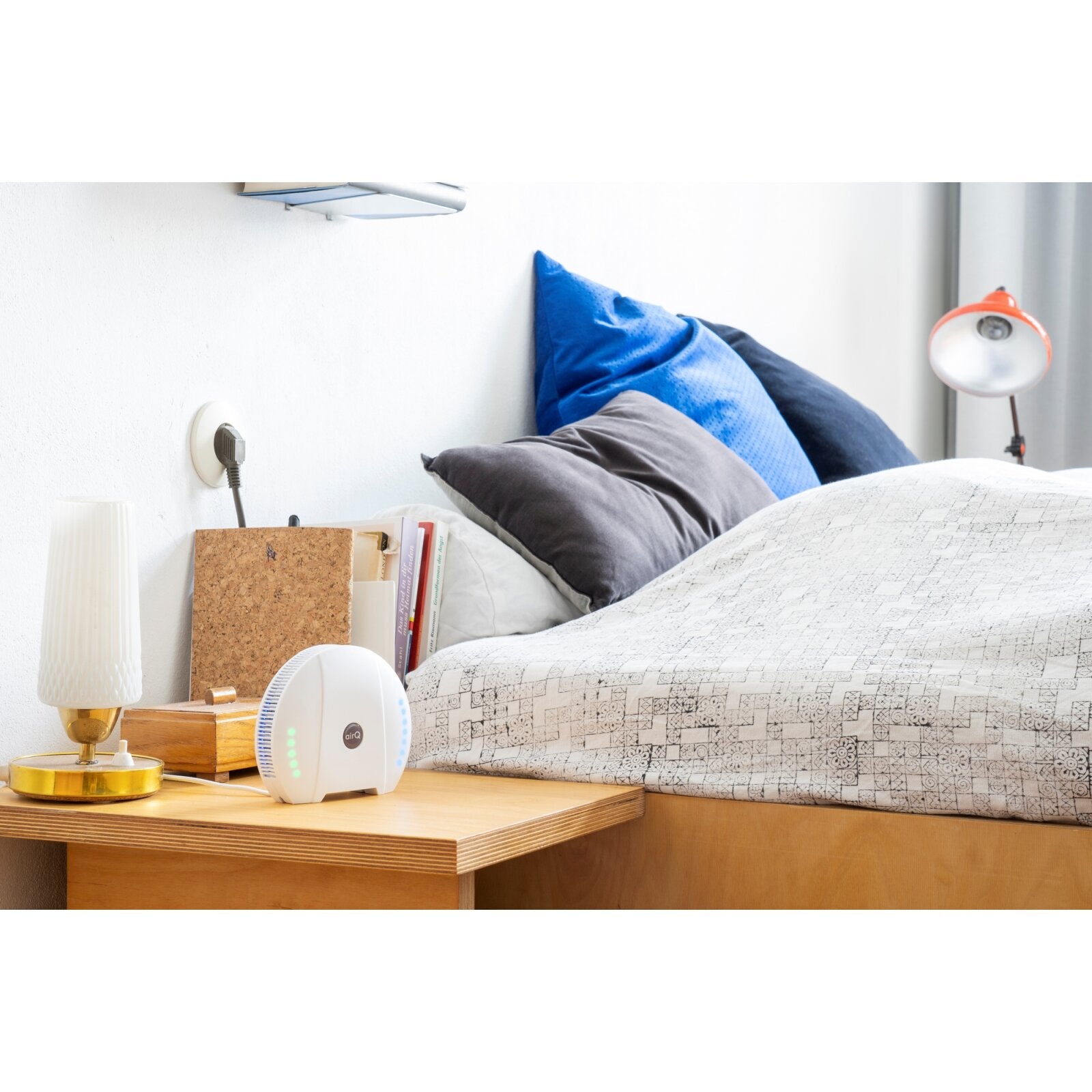
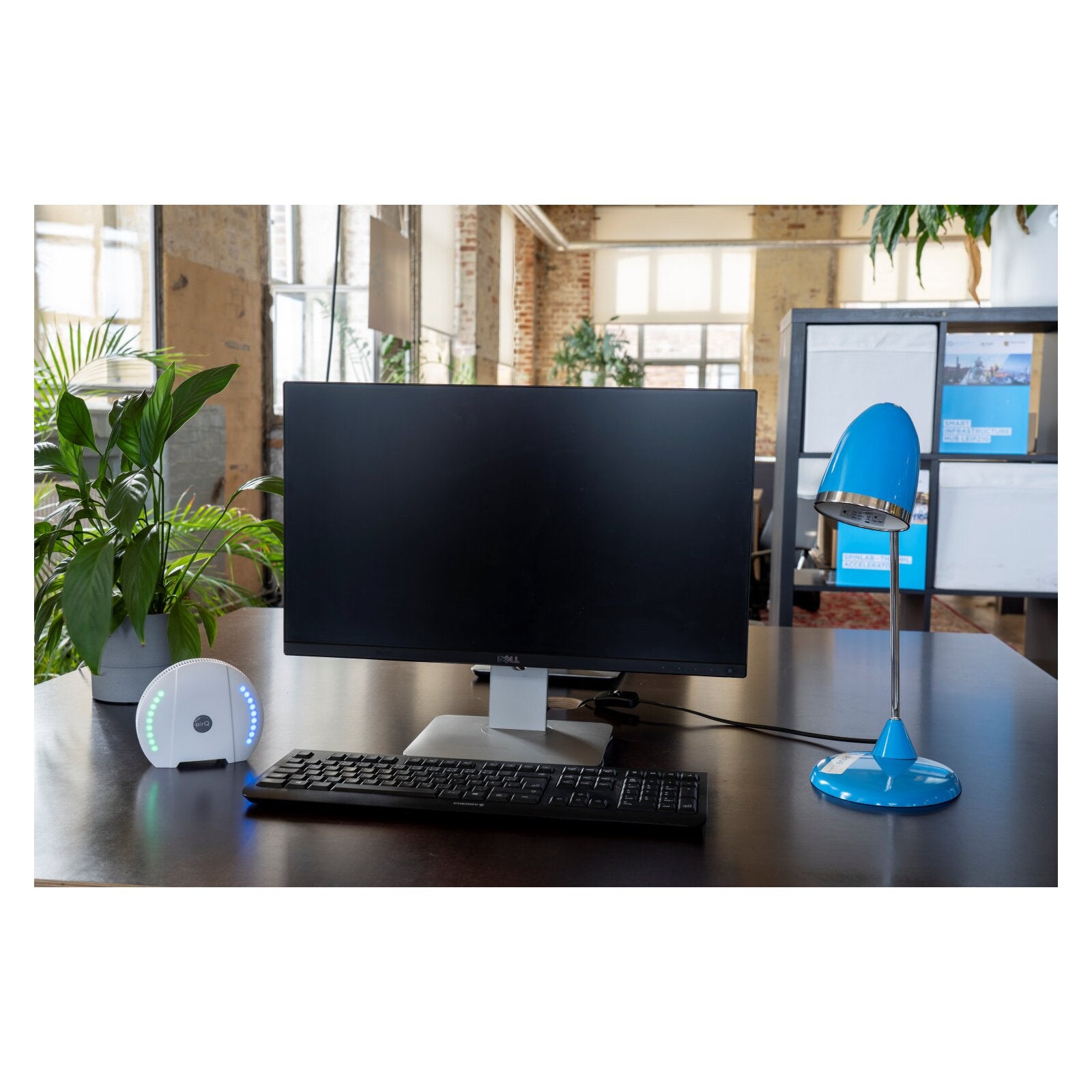
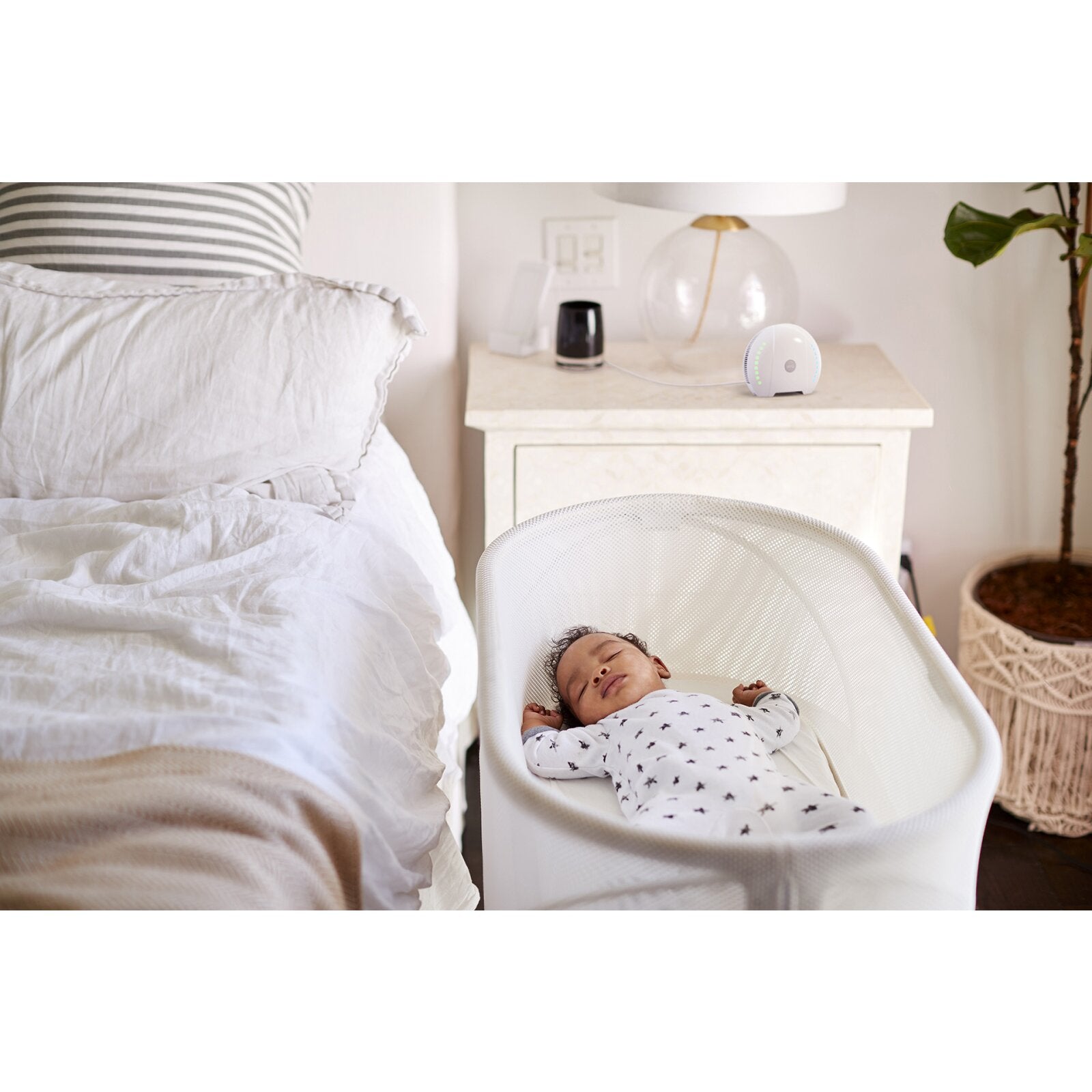

air-Q basic | Air analyzer (10 sensors)
Within Germany Shipping costs are staggered according to weight, delivery time approx. 1-3 working days:
0kg-13kg: 5.90€
14kg-22kg: 9.90€
23kg-31kg: 14.90€
32kg-41kg: 19,90€
42kg-55kg: 24.90€
56kg-69kg: 29,90€
70kg-85kg: 34.90€
86kg-101kg: 39,90€
102kg-117kg: 44.90€
118kg-133kg: 49,90€
134kg-149kg: 59,90€
150kg & more: 79,90€
There is no minimum order value.
The air-Q is the innovation for better air at home and in the office. It uses a variety of sensors to monitor the components of the air, the room climate and environmental influences. The device continuously analyses all data in real time (interval ~ 1.8 seconds) with scientific precision and thus offers individual and valuable solutions for a healthier life and more productive work.
With a wide range of sensors and optional additional sensors, the air-Q is currently the world's most comprehensive, powerful and intelligent air analyzer. No other device has more options and sensors.
The air-Q app is available for iOS (from iOS 11.0) and Android (from Android 6.0). It offers real-time measurements, diagrams and sophisticated analysis options as well as the air-Q health advisor with individual tips for improving your air quality.
All data is evaluated and continuously analyzed using artificial intelligence (AI). This allows previously unimagined possibilities for detecting situations and dangers.
There is no internet requirement - everything important works without internet! If the air-Q Cloud is optionally activated, the measurement data is temporarily stored on our own servers in Germany. This allows you to access the data on the go using the smartphone app, access the air-Q web app with multi-dimensional diagrams and many other functions such as push and email messages and smart widgets for integration into your own websites and presentations. Using the online functions is free of charge.
By the way, all measurement data can be downloaded both on the device (SD card) and via our apps as a CSV file.
The "air-Q basic" is an air analyzer with 10 high-quality sensors. The air analyzer includes a smartphone app for iOS / Android with many smart functions.
Dedizierte Sensoren
- Kohlendioxid - CO2
Bereich: 300 – 5.000 ppm
Auflösung: 1 ppm
Genauigkeit: ± 30 ppm, ± 3 % des Messwertes
Sensor-Lebenszeit: kein Verschleiß, da optische Messung (NDIR)* - Kohlenmonoxid - CO
Bereich: 0 – 5.700 mg/m³ (0 – 5.000 ppm)
Auflösung:
0,05 mg/m³ (0 – 180 mg/m³),
1,6 mg/m³ (>180 mg/m³)
Genauigkeit: ± 8 % des Messwertes
Sensor-Lebenszeit: bis zu 10 Jahre* - Feinstaub PM1
Bereich: 0 – 1.000 µg/m³
Auflösung: 1 µg/m³
Genauigkeit: ± 10 µg/m³, ± 10 % des Messwertes
Sensor-Lebenszeit: > 10 Jahre * - Feinstaub PM2.5
Bereich: 0 – 1.000 µg/m³
Auflösung: 1 µg/m³
Genauigkeit: ± 10 µg/m³, ± 10 % des Messwertes
Sensor-Lebenszeit: > 10 Jahre * - Feinstaub PM10
Bereich: 0 – 1.000 µg/m³
Auflösung: 1 µg/m³
Genauigkeit: ± 10 µg/m³, ± 10 % des Messwertes
Sensor-Lebenszeit: > 10 Jahre * - Flüchtige organische Verbindungen - VOC
Bereich: 0 – 60.000 ppb
Auflösung:
1 ppb (0 – 2.008 ppb),
6 ppb (2.008 – 11.110 ppb),
32 ppb (11.110 – 60.000 ppb)
Genauigkeit: ± 15 % des Messwertes
Sensor-Lebenszeit: > 10 Jahre* - Temperatur - T
Bereich: -40 – 125 °C
Auflösung: 0,1 °C
Genauigkeit: ± 0,5 °C
Sensor-Lebenszeit: kein Verschleiß* - Relative Luftfeuchte - ρrel
Bereich: 0 – 100 %
Auflösung: 0,1 %
Genauigkeit: ± 2 % des Messwertes
Sensor-Lebenszeit: bis zu 20 Jahre* - Luftdruck - p
Bereich: 300 – 1.200 hPa
Auflösung: 0,002 hPa
Relative Genauigkeit: ± 0,06 hPa
Sensor-Lebenszeit: kein Verschleiß* - Lärm - Lp
Bereich: 40 – 109 dB(A)
Frequenz: > 200 Hz
Auflösung: 1 dB
Genauigkeit: ± 2 dB
Sensor-Lebenszeit: kein Verschleiß*
- Absolute Luftfeuchte
Absolute Luftfeuchte - ρabs
Bereich: 0 – 200 g/m³
Auflösung: 0,05 g/m³
Genauigkeit: ± 2 % des Messwertes
Sensor-Lebenszeit: bis zu 20 Jahre* - Taupunkt
Taupunkt - Td
Bereich: -88 – 125 °C
Auflösung: 0,1 °C
Genauigkeit: ± 2 % des Messwertes
Sensor-Lebenszeit: bis zu 20 Jahre*
* Die Lebensdauer der Sensoren gilt bei Verwendung in einer normalen Haushaltsumgebung / Büroumgebung.
Still questions?
We have the answers!
If you still have questions, please take a look at our frequently asked questions – you will find all the answers there.
Frequently asked questions
Air
Air is our most important food. Statistically speaking, we consume 350,000 kilograms of air over the course of our lives. This is ten times more than food (35,000 kg) and five times more than liquid (70,000 kg). Source: Austria Federal Ministry of Agriculture, Forestry, Environment and Water Management
Especially volatile organic compounds (VOC) such as formaldehyde, toluene or benzene. They are contained in building materials, furniture or technical devices and evaporate continuously over years. Fine dust (from printers and copiers) also plays a role.
Nope. Technical systems are (very) expensive to purchase and require ongoing measures and investments (energy, maintenance, filter changes). Since these are filter systems, the pollutants are only collected. Fresh air is not produced - unlike plants.
Space
The number of plants required depends on the size of the room, the level of pollutants and the sensitivity of the people who live there. The rule of thumb is: an AIRY system in size S is sufficient for rooms up to 10 square meters, sizes M and L for up to 20 and 30 square meters respectively.
According to the WHO, indoor air is up to 30 times more contaminated with pollutants than outdoor air. Since people now spend around 90% of their time indoors, the effects are immense: the first symptoms of poisoning are mood disorders such as headaches and fatigue. Science speaks of the “Toxic Home Effect” or “Sick Building Syndrome”.
Ventilation helps against CO2 pollution in the air - but that is only part of the problem. In particular, pollutants from furniture, carpets, paints, varnishes and cleaning products evaporate and accumulate in the indoor air (so-called VOCs, volatile organic substances). Fine dust, caused for example by road traffic, can also penetrate into the interior through ventilation and pollute the indoor air. The AIRY biofilter collects all these pollutants - and is constantly cleaned by the plant roots.
plant
Yes. Without plants, life on planet Earth would not be possible. NASA has therefore researched how plants can be used to purify the air in space. She examined 30 different plant species for their air-purifying properties. The result: There are certain plants that, over the course of evolution, have specialized in feeding themselves “from the air”. These plants mainly come from dry, hot regions and are ideal for cleaning indoor air.
Plants absorb air through their leaves as part of photosynthesis. They transport the pollutants they contain to the roots. There the pollutants (especially VOCs) are broken down into their basic chemical components (amino acid, starch, glucose) by plant enzymes and microorganisms. Means: The pollutant is converted into nutrients for the plant without leaving any residue. As part of the NASA study mentioned, plants were completely ventilated (including the roots). If the leaves were removed, the plant's performance only decreased slightly (5-12%). This led to the conclusion that only ventilation of the root system enabled the plants to achieve their full potential.
The AIRY Base consists of lava, pumice and zeolite rock. This power mixture developed by scientists significantly expands the effectiveness of the AIRY. The fine-pored stones promote root aeration thanks to their coarse grain size. In addition, they absorb an extremely large amount of water, which they gradually release to the plant roots. Odors and pollutants also get caught in the fine-pored structure thanks to the air supply from below. The capillary effect ensures the continuous absorption and residue-free release of pollutants from the substrate to the roots. This means that the rock does not become clogged. Unlike industrial filters or activated carbon filters, the substrate never needs to be replaced.
Hydroponics is a system in which plants grow without soil. In such systems there are no microorganisms, but they are essential for the growth of plants. The absence of these organisms can cause plants to rot and produce harmful bacteria. This can lead to health problems for us humans indoors.
Person
Hydroponics is a system in which plants grow without soil. In such systems there are no microorganisms, but they are essential for the growth of plants. The absence of these organisms can cause plants to rot and produce harmful bacteria. This can lead to health problems for us humans indoors.
The proverbial “thick air” indoors has a variety of consequences:
- Mood disorders (headache, fatigue, mood swings, poor concentration, loss of appetite, nausea, sleep disorders)
- Irritation of the respiratory tract and eyes
- Allergies and hypersensitivitiesThe proverbial “thick air” indoors has a variety of consequences:
That depends on the plant growing in the AIRY. Scientific research has identified about 30 plants that are particularly effective against airborne environmental toxins. These are typically so-called “air roots” from the rainforest or desert plants. These plants are able to metabolize volatile organic compounds (VOCs) such as formaldehyde, benzene or toluene.
The AIRY system
We use the “chimney effect”: differences in temperature and pressure as well as air movements in the room ensure that air at the bottom of the pot gets into the inside and can rise between the inner pot and the outer wall and leave the pot again.
Never. The pollutants are removed without leaving any residue, so there is no “landfill on the windowsill”. In addition, the annoying repotting is no longer necessary: Due to the nature of the inner pot, the water-bearing roots stop growing (“air pruning”), leaving significantly more space for the nutrient-absorbing hair roots. This promotes the rapid and healthy growth of the plant.
An AIRY system consists of three components: pot, substrate and plant. In order to offer easy care and the best possible guarantee of success, we have developed our own mineral substrate. It offers the plant an ideal home.
Only light and water are required for ongoing operation. Both depend on the plant. The pot's water tank ensures pleasant maintenance intervals. Experience has shown that the system needs more water in the first few weeks until the humidity in the room has regulated.
The pot systems are manufactured on our behalf by a medium-sized injection molding company in North Rhine-Westphalia.
We developed the mineral substrate together with the Klanz company. Pumice and lava are mined in the Eifel, the zeolite comes from Slovakia.
We source the plants directly from Holland. They are quality tested by the “Orchideen Wichmann” nursery in Celle (Lower Saxony) and sent to our customers from there.
Yes, several times. Recently, the Fraunhofer Institute has carried out extensive studies using various pollutants (xylene, toluene) as examples. Compared to a plant in a conventional pot, the AIRY system was many times more powerful. The studies are available here: https://airy.green/pages/funktionweise
-
Fast shipping
-
30-day money-back guarantee
